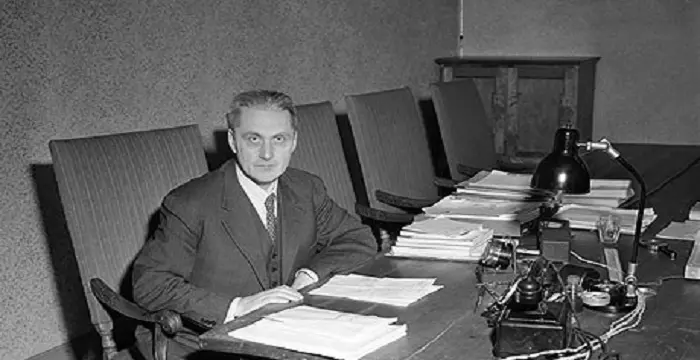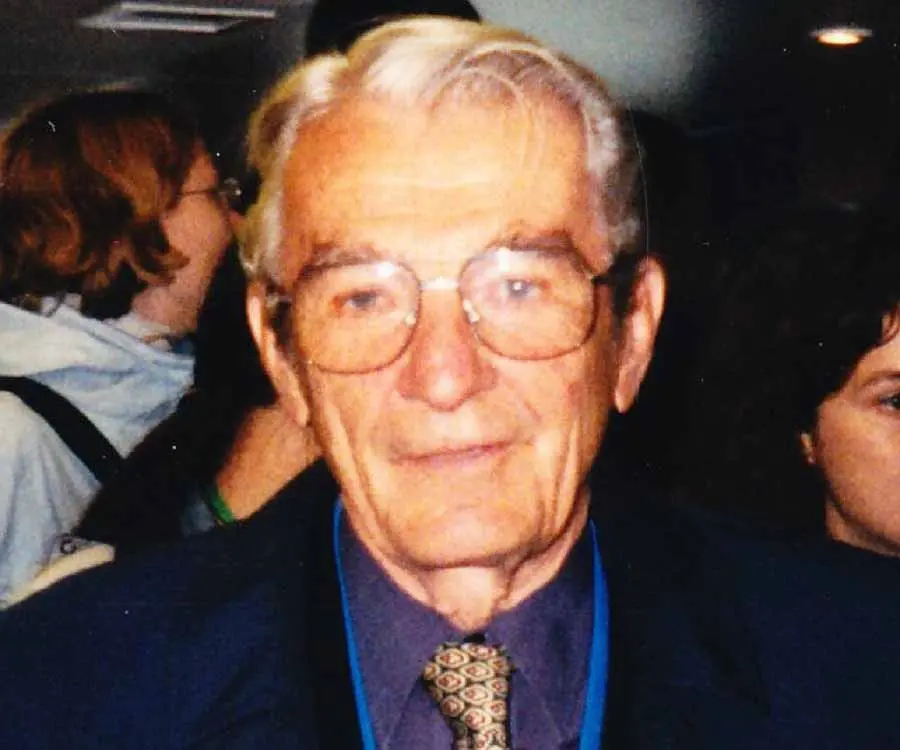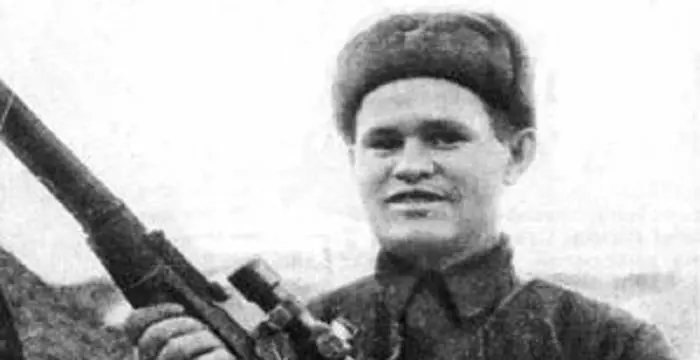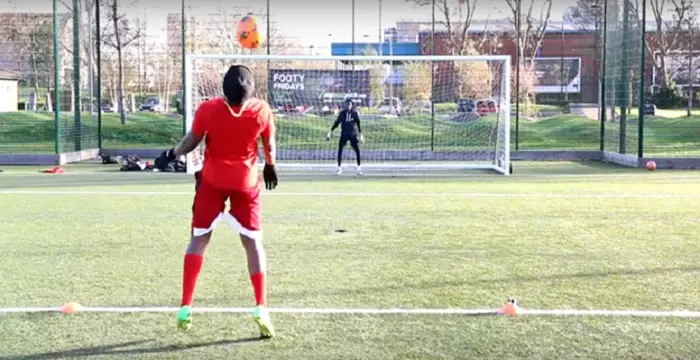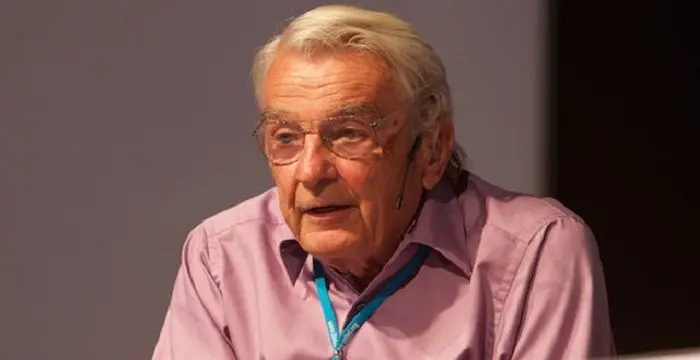
Ivar Giaever - Norwegian Men, Facts and Childhood
Ivar Giaever's Personal Details
Ivar Giaever is a noted Norwegian-American physicist who won the Nobel Prize in Physics in 1973
| Information | Detail |
|---|---|
| Birthday | April 5, 1929 |
| Nationality | Norwegian, American |
| Famous | Scientists, Physicists, Norwegian Men |
| Spouses | Inger Skramstad |
| Birth Place | Bergen, Norway |
| Born Country | Norway |
| Gender | Male |
| Father | John A. Giaever |
| Sun Sign | Aries |
| Born in | Bergen, Norway |
| Famous as | Physicist |
// Famous Norwegian Men
Herman Tommeraas
Herman Tommeraas is a Norwegian actor and model. Check out this biography to know about his birthday, childhood, family life, achievements and fun facts about him.
Martinus Gunnarsen
Martinus Gunnarsen is a Norwegian singer and the twin brother of Marcus Gunnarsen, better known as M&M. Let’s take a look at his family, personal life, music career, achievements, and some fun facts.
Ragnar Frisch
Ragnar Frisch was a renowned Norwegian economist who founding the discipline of econometrics. Check out this biography to know about his childhood, family life, achievements and other facts related to his life.
Ivar Giaever's photo
Who is Ivar Giaever?
Ivar Giaever is a noted Norwegian-American physicist, known for his work on tunneling phenomenon in solids for which he won the Nobel Prize in Physics in 1973. He spent his early life in Norway, where he was born into a middle class family in the first half of the twentieth century. After earning his degree in mechanical engineering from one of Norway’s biggest and best-known universities, he migrated to Canada at the age of twenty-five and joined the Canadian unit of General Electric. Very soon, he was transferred to the company’s American unit and from there he completed the company’s engineering course. Subsequently, he was sent to the General Electric Research and Development Center at New York and while working here, his interest turned towards physics. He soon took up his Nobel Prize winning work on tunneling through superconductors. Concurrently, he also started working for his PhD at Rensselaer Polytechnic Institute. Interestingly, he completed his Nobel Prize winning work four years before he earned his PhD. Dr. Giaever became a US citizen in 1964, but maintained close contact with Norway. After retiring from General Electric, he concurrently served the Rensselaer Polytechnic Institute, New York and the University of Oslo, Norway as faculty member. He now serves as a member of many distinguished societies.
// Famous Physicists
Henry Cavendish
Henry Cavendish was a theoretical chemist and physicist, renowned for discovery of hydrogen and calculation of the mass of earth. To know more about his childhood, profile, timeline and career read on
Walter Kohn
Nobel Laureate Walter Kohn was an Austrian-born American theoretical chemist and physicist. Check out this biography to know about his childhood, life, achievements, works & timeline.
Nikola Tesla
Nikola Tesla was a Serbian-American inventor, best known for his development of alternating current electrical systems. This biography of Nikola Tesla provides detailed information about his childhood, life, achievements, works & timeline.
Childhood & Early Life
Ivar Giaever was born on April 5, 1929 in Bergen, Norway into a middle class family. His father, John A. Giaever, was a pharmacist in the town of Totem. Ivar spent a large part of his childhood in this town.
He began his elementary education at Totem; later he shifted to Hamar, where he completed his secondary education. In 1947, after passing out from school, he joined Raufoss Munition Factories, working there for one year.
In 1948, he entered Norwegian University of Science and Technology (Norges teknisk-naturvitenskapelige universitet), located at Trondheim. It was the biggest university in Norway with a special emphasis on engineering courses. There he studied mechanical engineering and received his degree in 1952.
In 1953, he completed his military obligation, serving as a corporal in the Norwegian Army. Thereafter, he took employment under the Norwegian Government and worked as a patent examiner for another year. In 1954, he migrated to Canada.
Career
In Canada, Ivar Giaever began his career as an assistant to an architect; but very soon he changed his job and took employment under Canadian unit of General Electric. Here he joined the company’s Advanced Engineering Program.
In 1956, he was transferred to the General Electric Company's American unit. Working as an applied mathematician on various assignments, he completed the company’s A, B and C engineering courses.
In 1958, he was again transferred to the General Electric Research and Development Center at Schenectady, New York. While working here, his interest turned towards physics. Also in 1958, he entered Rensselaer Polytechnic Institute at Troy, New York, for his doctoral work in physics.
At General Electric Research and Development Center, Giaever began working in the fields of thin films, tunneling and superconductivity. By now, Japanese physicist, Leo Esaki, had discovered electron tunneling in semiconductors. Giaever now began working in the same direction.
In 1960, he established that tunneling also took place in superconductors. He conducted the experiment with a thin layer of oxide, coated with layers of superconducting metals. The experiment also demonstrated the existence of an energy gap, which is an energy range where no electron states can exist.
In 1964, Giaever earned his PhD in physics and continued working on tunneling. In 1969, his interest turned to biophysics. On receiving Guggenheim Fellowship, he traveled to England and spent one year at the Clare Hall, University of Cambridge, working on biophysics.
In 1970, he returned to General Electric Research and Development Center, where he continued working on biophysics. In the following year, he began his work on the behavior of protein molecules at solid surfaces and the interaction of cells with surfaces.
In May 1973, he was elected a Coolidge Fellow at General Electric for this work. Also in the same year, he received his Nobel Prize. In his own words, “The Nobel Prize opened a lot of doors, but also provided me with many distractions”.
Nonetheless, he continued his work on biophysics, trying to use physical methods and thoughts to solve biological problems. In 1988, he left General Electric and joined Rensselaer Polytechnic Institute as an Institute Professor. Concurrently he also served as a Professor at the University of Oslo, Norway. .
Among his later work, his studies on the motion of mammalian cells in tissue culture by growing both normal and cancerous cells on small electrodes are most significant. Besides, he has been elected to a number of important panels and has served on committees for several international conferences.
Major Works
Giaever is best known for his 1960 work on tunneling. Amalgamating the superconductor technology with Esaki’s work in tunneling he demonstrated that electrons can pass like waves of radiation through “holes” in solid-state devices. His work defied the conventional limitations of superconductors.
Awards & Achievements
In 1973, Ivar Giaever, along with Leo Esaki and Brian D. Josephson, was awarded the Nobel Prize in Physics “for their experimental discoveries regarding tunneling phenomena in semiconductors and superconductors, respectively". Esaki and Josephson had independently worked on the same subject.
He has also been awarded the Oliver E. Buckley Prize by the American Physical Society in 1965, and the Zworykin Award by the National Academy of Engineering in 1974..
Personal Life & Legacy
In 1954, Ivar Giaever married Inger Skramstad. The couple has four children and several grandchildren.
Trivia
Giaever was elected a member of the Executive Committee of the Solid State division in American Physical Society. However, when the Society endorsed the view that global warming is “incontrovertible”, he gave up his membership saying that nothing in science is “incontrovertible” and that the man-made global warming is a "new religion."
// Famous Scientists
Juliane Koepcke
Juliane Koepcke is a German-Peruvian biologist, who was the lone survivor among the 92 passengers and crew of the ill-fated LANSA Flight 508 that crashed in the Peruvian rainforest on 24 December 1971. Know more about her life in this biography.
Henry Cavendish
Henry Cavendish was a theoretical chemist and physicist, renowned for discovery of hydrogen and calculation of the mass of earth. To know more about his childhood, profile, timeline and career read on
Konstantin Tsiolkovsky
Konstantin Tsiolkovsky was a Russian rocket scientist and a pioneer of astronautics. This biography provides detailed information about his childhood, family, personal life, career, achievements, etc.
Ivar Giaever's awards
| Year | Name | Award |
|---|---|---|
Other | ||
| 0 | Oliver E. Buckley Condensed Matter Prize (1965) | |
| 0 | Nobel Prize in Physics (1973) | |
Ivar Giaever biography timelines
- // 5th Apr 1929Ivar Giaever was born on April 5, 1929 in Bergen, Norway into a middle class family. His father, John A. Giaever, was a pharmacist in the town of Totem. Ivar spent a large part of his childhood in this town.
- // 1947He began his elementary education at Totem; later he shifted to Hamar, where he completed his secondary education. In 1947, after passing out from school, he joined Raufoss Munition Factories, working there for one year.
- // 1948 To 1952In 1948, he entered Norwegian University of Science and Technology (Norges teknisk-naturvitenskapelige universitet), located at Trondheim. It was the biggest university in Norway with a special emphasis on engineering courses. There he studied mechanical engineering and received his degree in 1952.
- // 1953 To 1954In 1953, he completed his military obligation, serving as a corporal in the Norwegian Army. Thereafter, he took employment under the Norwegian Government and worked as a patent examiner for another year. In 1954, he migrated to Canada.
- // 1954In 1954, Ivar Giaever married Inger Skramstad. The couple has four children and several grandchildren.
- // 1956In 1956, he was transferred to the General Electric Company's American unit. Working as an applied mathematician on various assignments, he completed the company’s A, B and C engineering courses.
- // 1958In 1958, he was again transferred to the General Electric Research and Development Center at Schenectady, New York. While working here, his interest turned towards physics. Also in 1958, he entered Rensselaer Polytechnic Institute at Troy, New York, for his doctoral work in physics.
- // 1960In 1960, he established that tunneling also took place in superconductors. He conducted the experiment with a thin layer of oxide, coated with layers of superconducting metals. The experiment also demonstrated the existence of an energy gap, which is an energy range where no electron states can exist.
- // 1960Giaever is best known for his 1960 work on tunneling. Amalgamating the superconductor technology with Esaki’s work in tunneling he demonstrated that electrons can pass like waves of radiation through “holes” in solid-state devices. His work defied the conventional limitations of superconductors.
- // 1964 To 1969In 1964, Giaever earned his PhD in physics and continued working on tunneling. In 1969, his interest turned to biophysics. On receiving Guggenheim Fellowship, he traveled to England and spent one year at the Clare Hall, University of Cambridge, working on biophysics.
- // 1965 To 1974He has also been awarded the Oliver E. Buckley Prize by the American Physical Society in 1965, and the Zworykin Award by the National Academy of Engineering in 1974..
- // 1970In 1970, he returned to General Electric Research and Development Center, where he continued working on biophysics. In the following year, he began his work on the behavior of protein molecules at solid surfaces and the interaction of cells with surfaces.
- // 1973In 1973, Ivar Giaever, along with Leo Esaki and Brian D. Josephson, was awarded the Nobel Prize in Physics “for their experimental discoveries regarding tunneling phenomena in semiconductors and superconductors, respectively". Esaki and Josephson had independently worked on the same subject.
- // May 1973In May 1973, he was elected a Coolidge Fellow at General Electric for this work. Also in the same year, he received his Nobel Prize. In his own words, “The Nobel Prize opened a lot of doors, but also provided me with many distractions”.
- // 1988Nonetheless, he continued his work on biophysics, trying to use physical methods and thoughts to solve biological problems. In 1988, he left General Electric and joined Rensselaer Polytechnic Institute as an Institute Professor. Concurrently he also served as a Professor at the University of Oslo, Norway. .
// Famous Aries Celebrities peoples
Skai Jackson
Skai Jackson is an American child actress with huge fan following. Find more about her family & personal life, relationships, facts and more.
Shemar Moore
Shemar Moore is a model turned actor best known for his role in the television series ‘The Young and the Restless’. This biography of Shemar Moore provides detailed information about his childhood, life, achievements, works & timeline.
Vasily Zaytsev
Vasily Zatysev was a Russian sniper who served during the World War II. Check out this biography to know about his childhood, family life, achievements and fun facts about him.
Ivey Meeks
Ivey Meeks is an American YouTube star and model. Let’s have a look at her family and personal life including age, date of birth, net worth, boyfriends and fun facts.
Tobi Lerone
Check out all that you wanted to know about Tobi Lerone, the famous YouTube Personality and gamer; his birthday, his family and personal life, his girlfriends, fun trivia facts and more.
Simone Signoret
Simone Signoret was a French actress who became the first French person to win an Academy Award. Check out this biography to know about her childhood, family life, achievements and other facts related to her life.
Ivar Giaever's FAQ
What is Ivar Giaever birthday?
Ivar Giaever was born at 1929-04-05
Where is Ivar Giaever's birth place?
Ivar Giaever was born in Bergen, Norway
What is Ivar Giaever nationalities?
Ivar Giaever's nationalities is Norwegian, American
Who is Ivar Giaever spouses?
Ivar Giaever's spouses is Inger Skramstad
Who is Ivar Giaever's father?
Ivar Giaever's father is John A. Giaever
What is Ivar Giaever's sun sign?
Ivar Giaever is Aries
How famous is Ivar Giaever?
Ivar Giaever is famouse as Physicist


